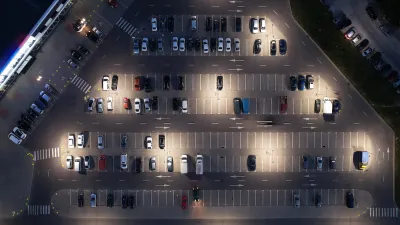Bipartisan support, robust funding, and access to comprehensive data are keys to the success of programs that assist unhoused veterans.

In an op-ed in Next City, Beth Sandor explains how cities have managed to reduce veteran homelessness despite a rise in the overall unhoused population — and what lessons these strategies offer for solving the broader crisis.
According to Sandor, 12 U.S. communities have achieved “functional zero” veteran homelessness. “The hallmarks of these successes in reducing veteran homelessness — including data, funding, and the power of coordination — provide a roadmap for U.S. communities to make homelessness rare and brief for everyone.”
Sandor writes that accurate data about unhoused residents is the first step in understanding people’s needs. “The Department of Veterans Affairs (VA) provides a good starting point by knowing each unhoused veteran that accesses its services — including names, demographic data, locations, health conditions, types of services received and needs beyond housing, such as psychiatric care or legal help.” Similar systems for all unhoused people could help allocate resources more effectively.
In addition to more robust funding, programs aimed at reducing veteran homelessness also benefit from deeper collaboration across levels of government and political parties. “That same cross-party buy-in is necessary for reducing homelessness across all populations.”
Sandor concludes, “The path forward is an understanding of each person experiencing homelessness — and the financial resources and collaboration that can bring each person home.”
FULL STORY: We’ve Cracked the Code on Veteran Homelessness. We Can Solve Homelessness the Same Way.

Manufactured Crisis: Losing the Nation’s Largest Source of Unsubsidized Affordable Housing
Manufactured housing communities have long been an affordable housing option for millions of people living in the U.S., but that affordability is disappearing rapidly. How did we get here?

Americans May Be Stuck — But Why?
Americans are moving a lot less than they once did, and that is a problem. While Yoni Applebaum, in his highly-publicized article Stuck, gets the reasons badly wrong, it's still important to ask: why are we moving so much less than before?

Using Old Oil and Gas Wells for Green Energy Storage
Penn State researchers have found that repurposing abandoned oil and gas wells for geothermal-assisted compressed-air energy storage can boost efficiency, reduce environmental risks, and support clean energy and job transitions.

Updating LA’s Tree Rules Could Bring More Shade to Underserved Neighborhoods
A new USC study finds that relaxing Los Angeles’ outdated tree planting guidelines could significantly expand urban tree canopy and reduce shade disparities in lower-income neighborhoods, though infrastructure investments are also needed.

California's Canal Solar Projects Aim to Conserve Resources and Expand Clean Energy
California’s Project Nexus has begun generating electricity from solar panels installed over irrigation canals, with researchers and state agencies exploring statewide expansion to conserve water and boost clean energy production.

HHS Staff Cuts Gut Energy Assistance Program
The full staff of a federal program that distributes heating and cooling assistance for low-income families was laid off, jeopardizing the program’s operations.
Urban Design for Planners 1: Software Tools
This six-course series explores essential urban design concepts using open source software and equips planners with the tools they need to participate fully in the urban design process.
Planning for Universal Design
Learn the tools for implementing Universal Design in planning regulations.
Heyer Gruel & Associates PA
City of Moreno Valley
Institute for Housing and Urban Development Studies (IHS)
City of Grandview
Harvard GSD Executive Education
Salt Lake City
NYU Wagner Graduate School of Public Service
City of Cambridge, Maryland





























